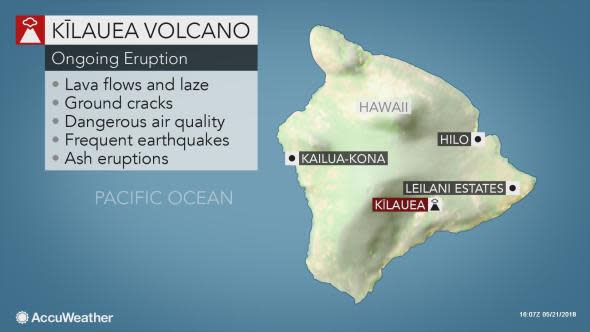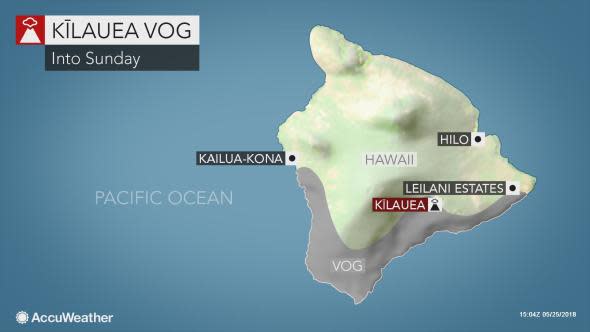Kīlauea Volcano: Eruptions, lava flows continue to threaten residents
As the eruption at Hawaii's Kīlauea Volcano continues to evolve, the multitude of dangerous threats to residents shows no signs of subsiding.
The number of fissures that have cracked open is now at 23, and a spattering of lava continues to ooze from at least five of them.
"Future outbreaks could occur both uprift (southwest) and downrift (northeast) of the existing fissures, or existing fissures can be reactivated. Communities downslope of these fissures could be at risk from lava inundation. Activity can change rapidly," the HVO stated.
The United States Geological Survey reported that a second lava flow reached the ocean on Thursday, increasing the threat of laze in the area.

Aerial view of erupting fissure no. 22 and lava channels flowing southward from the fissure during an early morning overflight on Monday, May 21. (Photo/USGS)
"Laze [a mix of hydrochloric acid, steam and fine glass particles] is formed when hot lava hits the ocean, sending hydrochloric acid and steam with fine glass particles into the air," the defense agency stated. "Health hazards of laze include lung, eye and skin irritation."
Sulfur dioxide concentrations are likely elevated to higher levels throughout the area downwind of the vents, officials said.
AccuWeather meteorologists state that northeasterly trade winds will continue to confine volcanic fog, also known as vog, and the laze to southern and western areas of Hawaii Island into Sunday.
"The trade winds may lessen later in the Memorial Day holiday weekend," AccuWeather Senior Meteorologist Kristina Pydynowski said. "If the winds become southeasterly for a time Monday into Tuesday, there is a chance the vog may reach other parts of the Big Island and, possibly, even the smaller islands of Hawaii."

Ash eruptions also continue to spew from the volcano.
One eruption on Thursday evening produced an ash cloud that rose to 10,000 feet above sea level and carried slightly more ash than most recent eruptions, the Hawaiian Volcano Observatory said.
"Additional explosive events that could produce minor amounts of ashfall downwind are possible at any time," the agency reported.
"How large the eruption is will determine where the ash cloud will head," Pydynowski said.
"Ash from the smaller type of eruptions that have been occurring recently will tend to be directed to the southwest of the volcano," she said. "A more explosive eruption that reaches higher in the atmosphere can lead to the ash cloud spreading over more of the Big Island."

State, federal and county officials continue to closely monitor the situation at the Puna Geothermal Venture (PGV), located in the lower East Rift Zone.
"This activity destroyed the former Hawaii Geothermal Project site adjacent to the PGV," the Hawaii County Civil Defense Agency said. "Lava has not encroached further onto PGV property [as of Thursday morning]."
"PGV is a geothermal energy conversion plant bringing steam and hot liquid up through underground wells. The hot liquid (brine) is not used for electricity at this time. The steam is directed to a turbine generator that produces electricity," according to a description on the company's website.
All 11 wells on the site of the plant have been quelled, and efforts continue to ensure the safety of the neighboring community.
Hawaii Electric Light, the utility provider that utilizes the energy from the plant, said it is developing contingency plans to provide options for restoring electricity to communities that have been cut off by lava.
